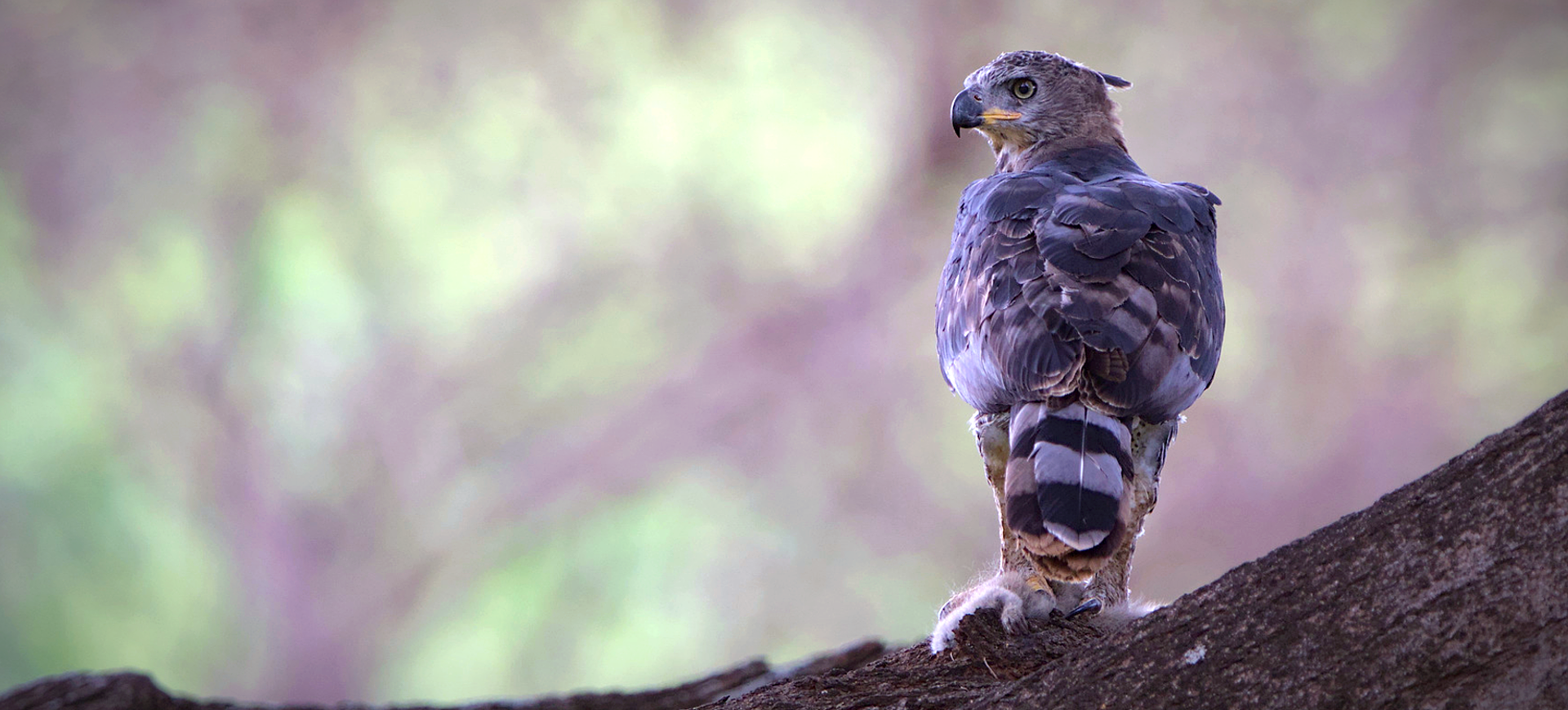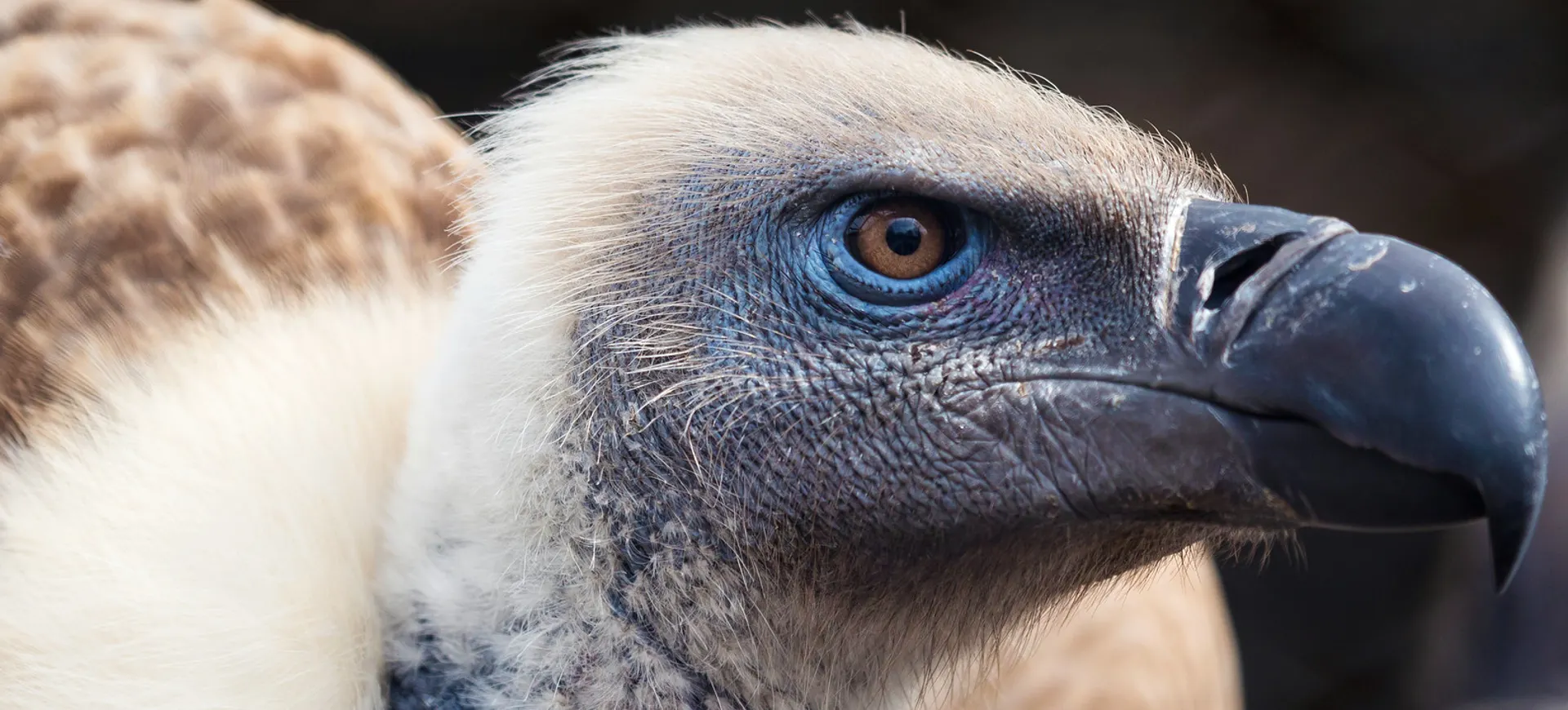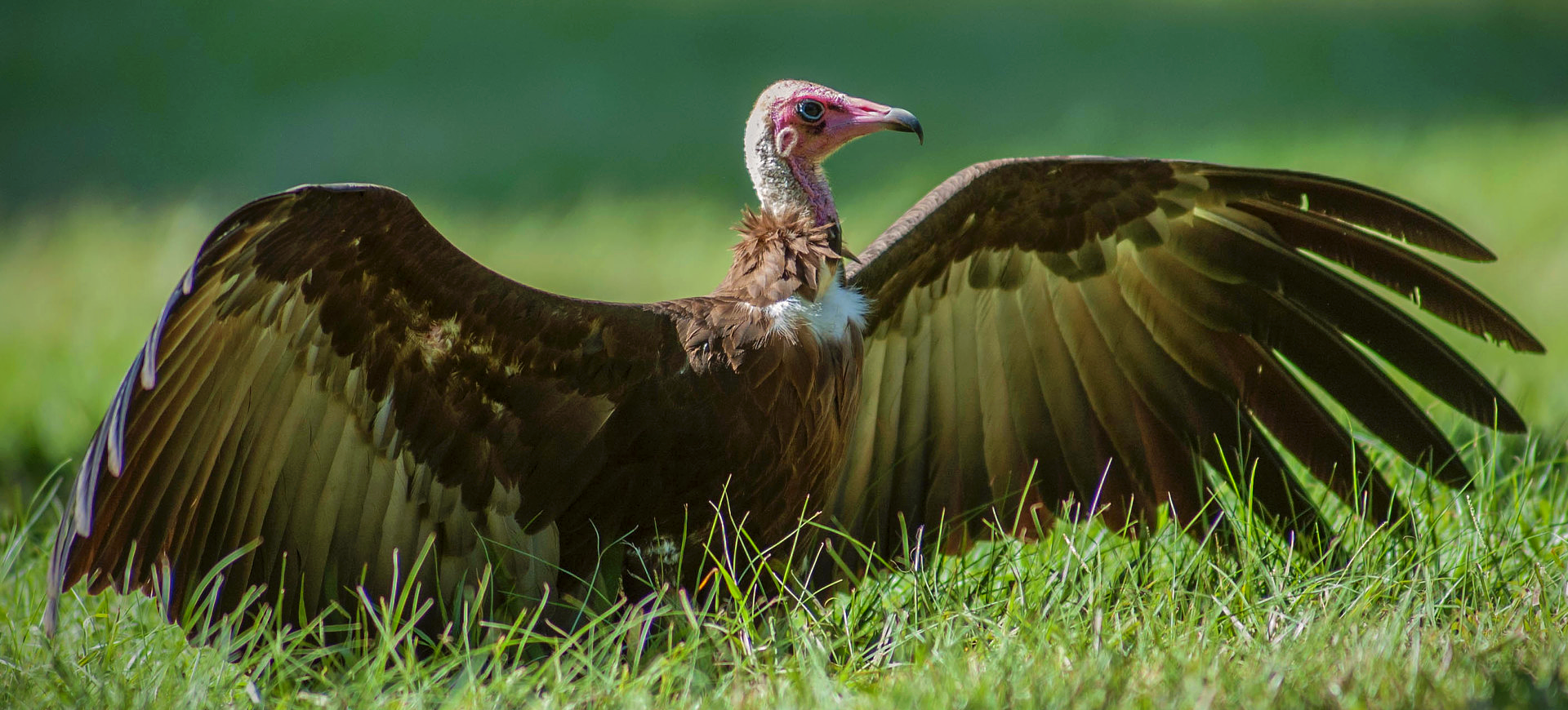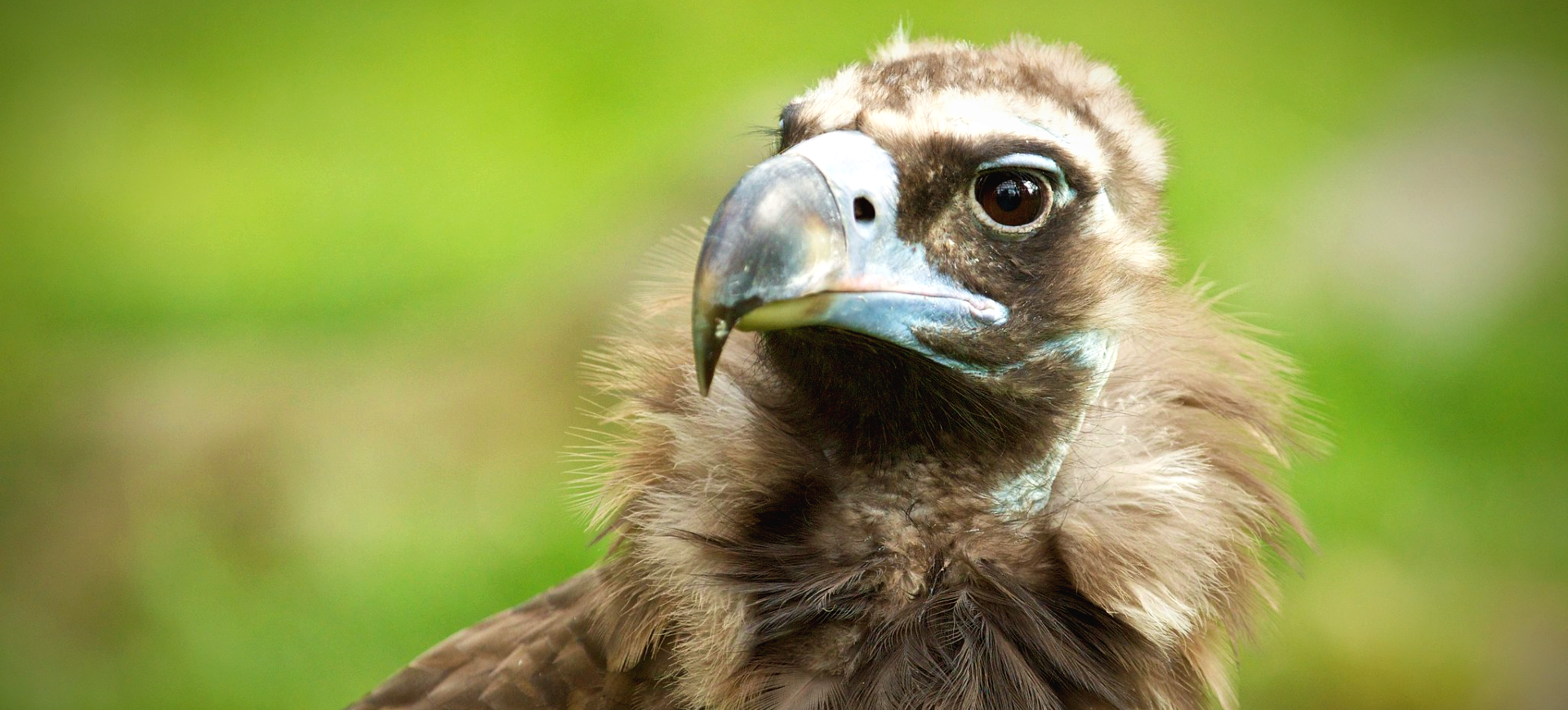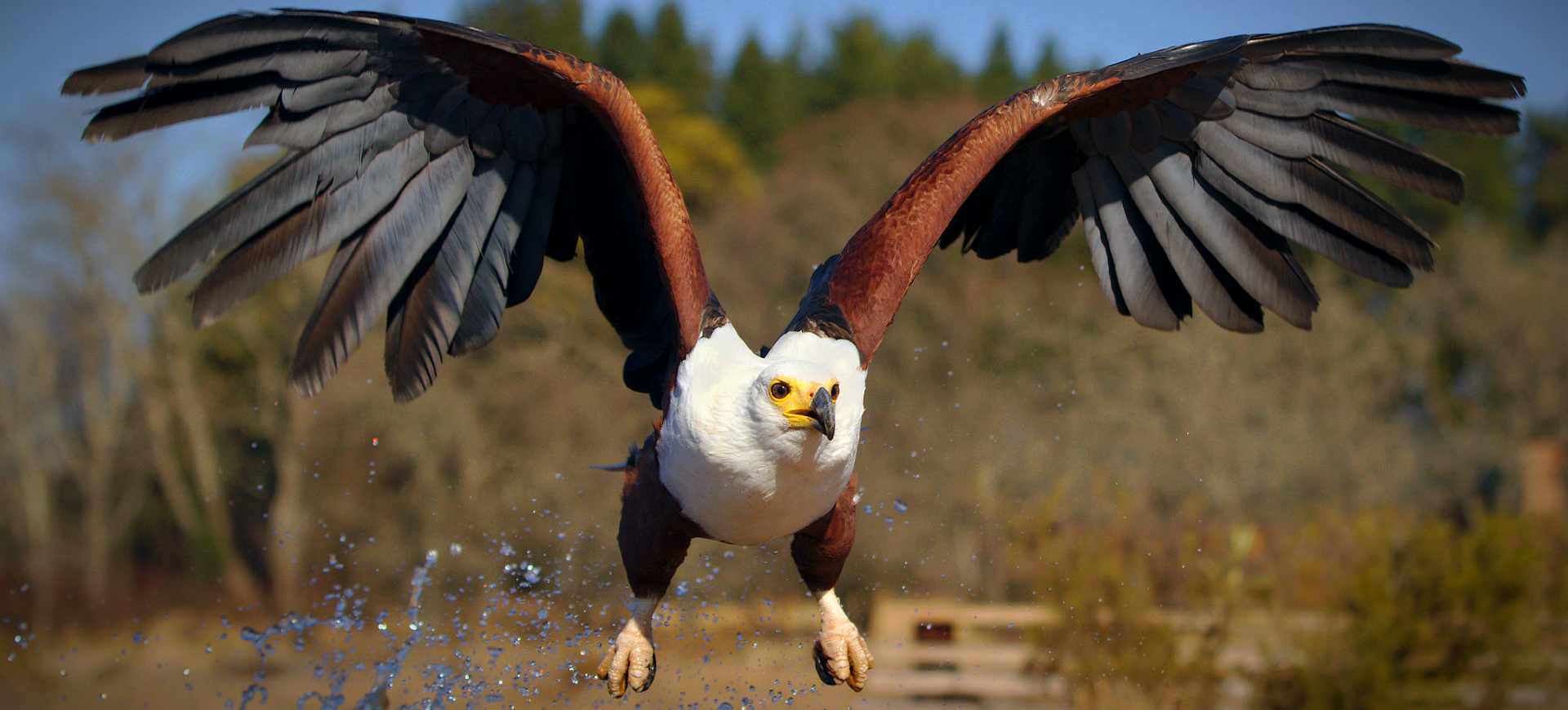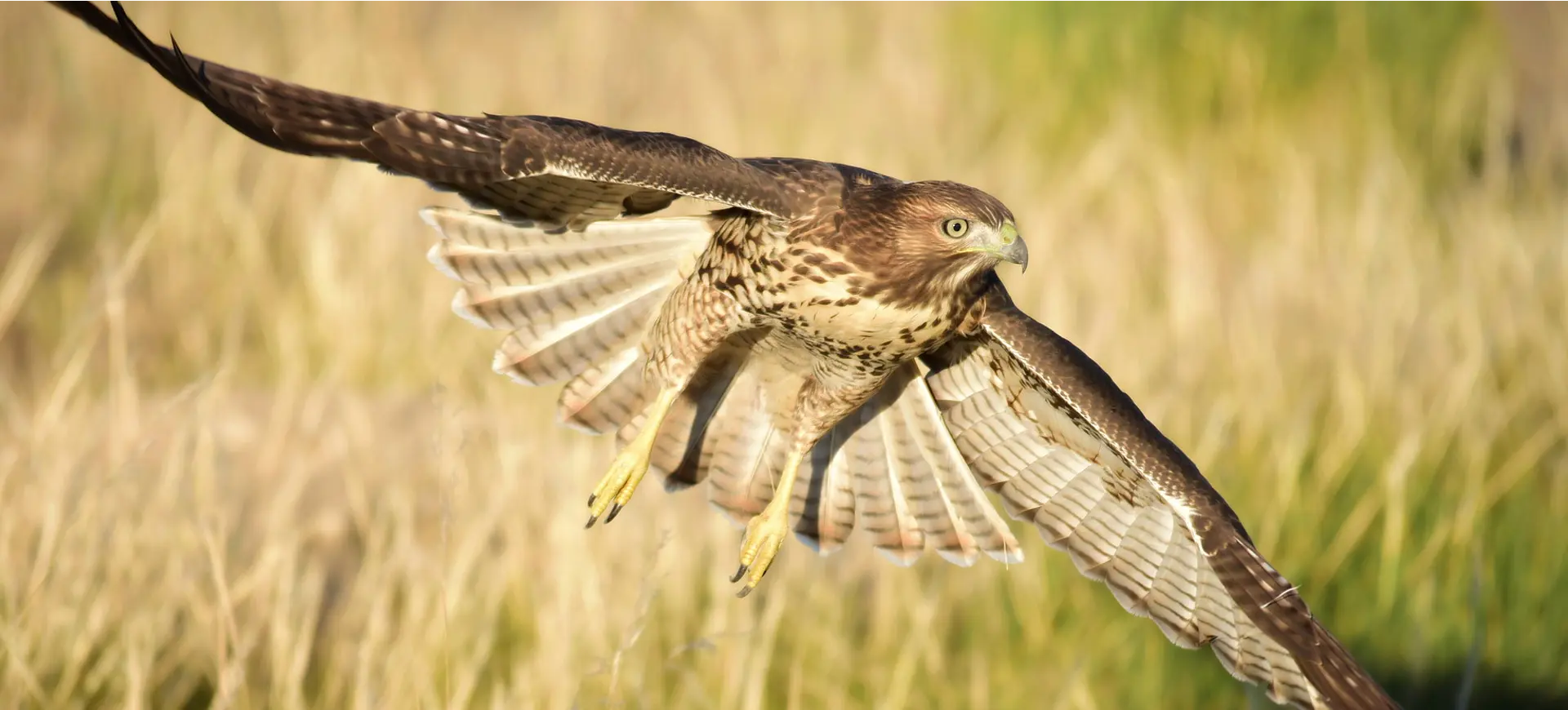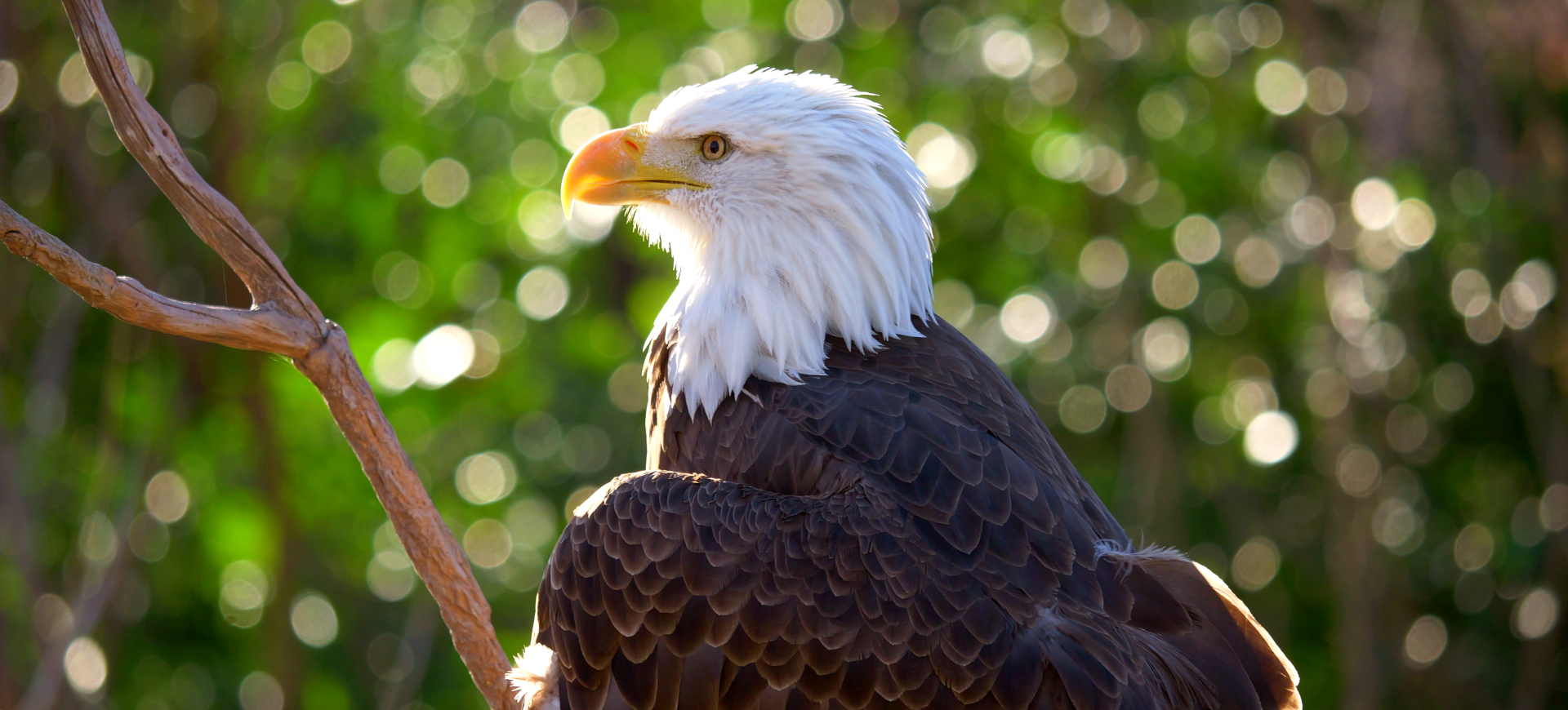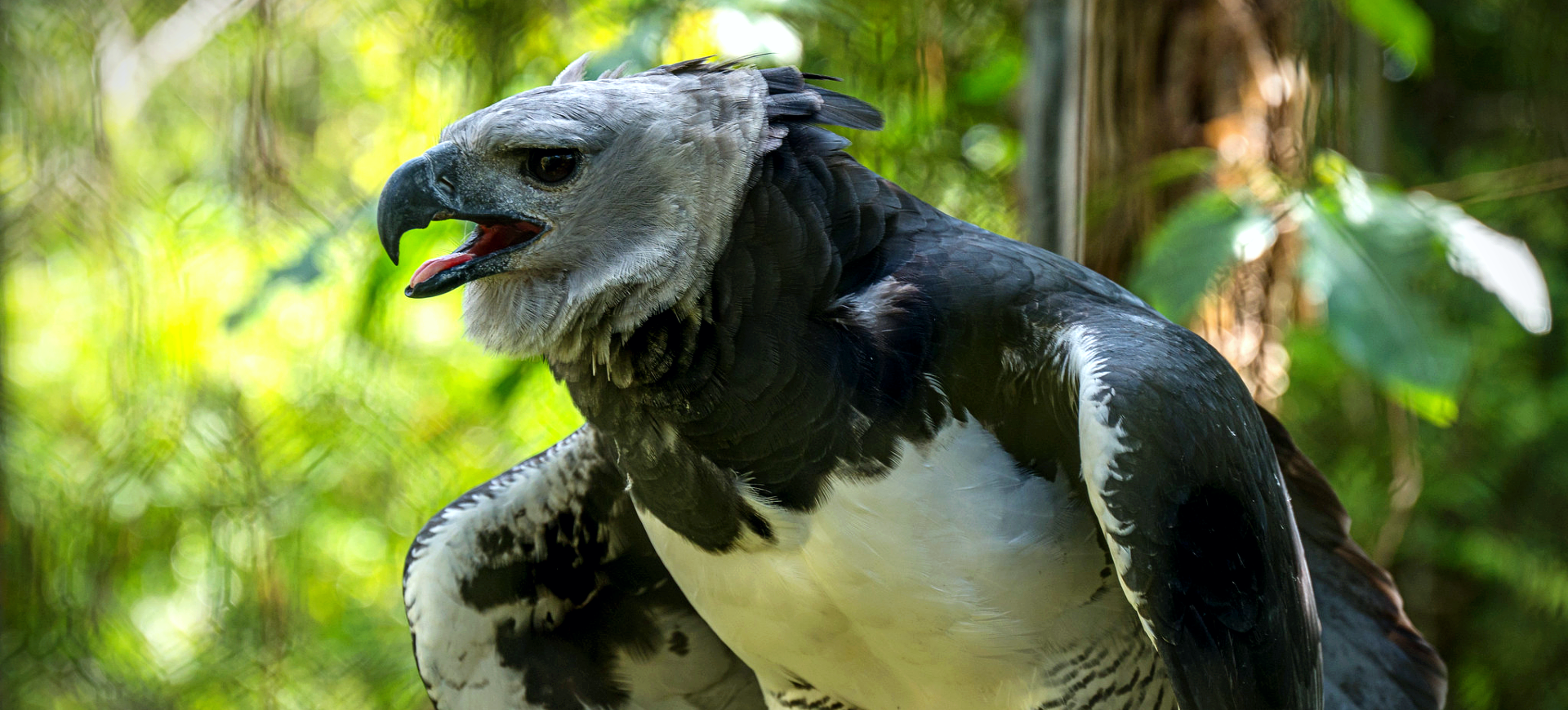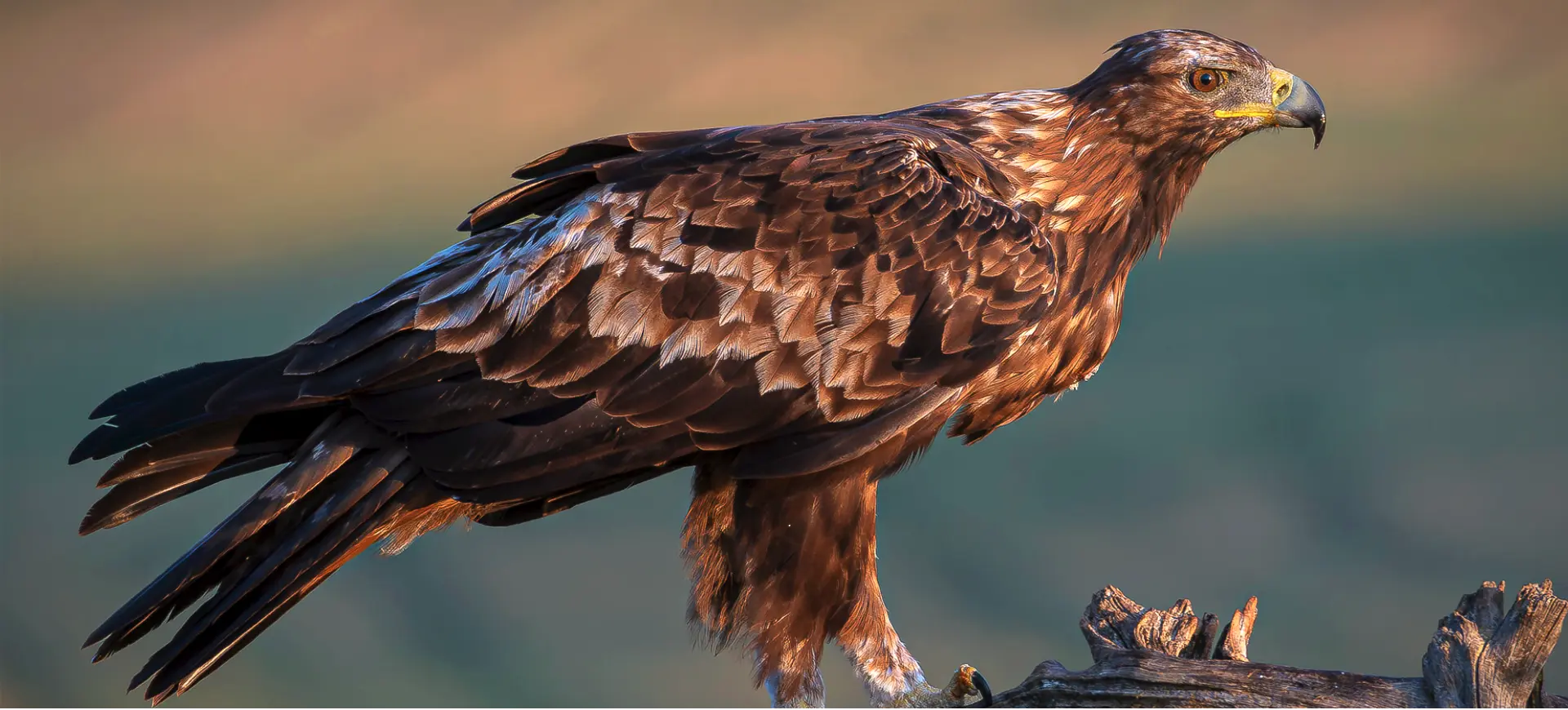Overview
The Palm-nut Vulture, scientifically known as Gypohierax angolensis, is a unique bird of prey residing in the regions of Sub-Saharan Africa. It’s notably different from other vultures due to its diet and physical appearance. This species is relatively small compared to other vultures and exhibits a striking contrast in its plumage, with white and black colors dominating its body and wings. Unusual for a bird of prey, the Palm-nut Vulture primarily feeds on the fruit of the oil palm, supplementing its diet occasionally with small animals, making it a fascinating subject of study.
The Palm-nut Vulture is often found in forested regions near water bodies with abundant palm trees. Its feeding behavior is intriguing, as it is one of the few birds of prey known to eat fruit regularly. The bird uses its sharp, hooked beak to tear into the hard exterior of palm fruits, exhibiting a unique adaptation among vultures. Its presence indicates healthy palm ecosystems, which are crucial for the biodiversity of the regions they inhabit.
Conservation efforts for the nut vulture have been relatively successful, keeping it out of the critically endangered zones. However, habitat loss and poisoning pose significant threats to their populations. This species is a vital part of the African ecosystem, acting as a seed disperser for the palm trees and a cleaner by consuming carrion. Its unique ecological role highlights the importance of conserving not just the species itself but also its habitat.
Taxonomy
Kingdom
Phylum
Class
Order
Family
Genus
Species
Type
Physical Description:
The Palm-nut Vulture is notable for its distinctive white and black plumage. Adults have a striking white head, neck, and chest, contrasting black back, wings, and tail. Juveniles are generally darker, with brown and grey feathers gradually molting to the distinct adult coloration over several years. The bird’s hooked beak is well adapted for tearing into tough palm fruits and carrion, while its relatively small size, with a body length of about 60 cm, sets it apart from larger vulture species.
In flight, the Palm-nut Vulture’s broad and rounded wings are prominent, aiding in soaring and maneuvering through its forested habitat. Its eyes are sharp and adapted for spotting food from a distance. The legs are strong and equipped with powerful talons, although they are used more for perching and handling food than for capturing prey. Overall, the physical characteristics of the Palm-nut Vulture are a testament to its adaptation to a unique ecological niche.

Lifespan: Wild: ~20 Years || Captivity: ~30 Years

Weight: Male: 3.3-4.4 lbs (1.5-2 kg) || Female: 4.4-5.5 lbs (2-2.5 kg)

Length: Male: 22-24 inches (55-60 cm) || Female: 24-26 inches (60-65 cm)

Wingspan: Male & Female: 47-55 inches (120-140 cm)

Top Speed: 30 mph (48 km/h)
Characteristic:
Native Habitat:
Palm-nut Vultures are primarily found in the forests and savannas of Sub-Saharan Africa, particularly where palm trees are abundant. They prefer habitats near water bodies like rivers, lakes, and swamps, which provide ample food and nesting opportunities. These regions support a rich biodiversity, offering the vultures a variety of potential food sources and nesting sites.
The presence of oil palm and raffia palm trees is crucial for the Palm-nut Vulture’s survival, as these trees provide the majority of their diet. The birds are often seen perched high in the canopy, scanning for food or resting. Their adaptation to these specific habitats underscores the importance of conserving these areas for the species’ continued survival.
Biomes:
Biogeographical Realms:
Continents:
Countries:
Diet:
Diet & Feeding Habits:
The Palm-nut Vulture’s diet is unique among vultures, as it primarily consumes the fruit of the oil palm and the raffia palm. Its sharp beak and strong jaw muscles are well adapted for tearing open tough fruit exteriors to access the nutritious inner pulp. While most of its diet consists of these fruits, it will opportunistically feed on fish, insects, and small vertebrates, reflecting its adaptable feeding strategies.
In addition to palm fruits, the nut vulture plays a role in controlling populations of carrion and other small animals. Consuming carrion helps prevent the spread of disease and contributes to the ecosystem’s health. This varied diet underscores the bird’s ecological importance and highlights its adaptability to different food sources, an advantage in changing environments.
Mating Behavior:
Mating Description:
The Palm-nut Vulture is monogamous, forming long-lasting pair bonds with a single mate. Courtship involves aerial displays where the pair soars together, performing synchronized maneuvers. Nesting typically occurs in tall trees near water sources, with both parents involved in constructing the large stick nest. They usually lay one egg per breeding season, which both parents incubate and care for until it hatches.
Once the chick hatches, both parents are involved in its upbringing, bringing it food and protecting it from potential threats. The juvenile vulture will stay with its parents for several months, learning essential survival skills before becoming independent. This extended parental care ensures the young bird has the best chance of survival in the wild. The social bonds formed during this period are vital for the species’ social structure and future mating success.
Reproduction Season:
Birth Type:
Pregnancy Duration:
Female Name:
Male Name:
Baby Name:
Social Structure Description:
The Palm-nut Vulture is somewhat solitary but can also be found in small groups, particularly where food sources are abundant. They are known to roost communally, with several individuals gathering in preferred trees. During the breeding season, pairs are highly territorial, defending their nests aggressively against intruders. Outside of breeding, however, they are less territorial and may be seen feeding or resting in the company of other vultures.
The social interactions of Palm-nut Vultures, especially during the breeding season, are complex and involve various vocalizations and displays. These behaviors reinforce pair bonds and social hierarchies within the group. Understanding their social structure is crucial for conservation, affecting how they utilize habitat and respond to environmental changes.
Groups:
Conservation Status:
Population Trend:
The Palm-nut Vulture is currently classified as Least Concern by the IUCN, reflecting a relatively stable population across its range. While exact numbers are unknown, the species is generally considered widespread in suitable habitats. However, this status should not lead to complacency, as localized declines and threats could quickly change their conservation status.
Habitat loss, poisoning, and human disturbance threaten the nut vulture’s population. Deforestation and land conversion for agriculture reduce the availability of suitable nesting and feeding sites. Additionally, the use of pesticides can indirectly poison the birds, affecting their health and reproductive success. Continuous monitoring and research are necessary to understand the population dynamics and implement effective conservation measures.
Population Threats:
Habitat loss due to deforestation and agricultural expansion is a significant threat to the Palm-nut Vulture. As their preferred habitats are altered or destroyed, the birds lose essential feeding and nesting sites, directly impacting their survival. Additionally, poisoning, either intentional or accidental, poses a severe risk, as vultures consuming contaminated carrion can suffer fatal consequences.
Conflict with humans, particularly around fishing areas where the birds might be seen as competitors, can also lead to persecution. The increasing impact of climate change, altering the distribution of palm trees and other food sources, is an emerging threat that could have long-term effects on the species’ distribution and population health.
Conservation Efforts:
Conservation efforts for the nut vulture include habitat protection and management, ensuring the preservation of crucial feeding and nesting sites. Protected areas in their range are vital for providing safe havens where the birds can live without the threat of habitat destruction. Education and awareness programs are also essential, helping local communities understand the importance of vultures and the need to protect them.
Efforts to reduce poisoning include promoting safe disposal of carcasses and controlling the use of pesticides. Rehabilitation programs for injured or poisoned birds contribute to maintaining population levels. International cooperation is necessary to ensure the conservation of this species, given its wide range across multiple countries.
Additional Resources:
Fun Facts
- Despite being a vulture, the Palm-nut Vulture’s diet is primarily vegetarian, mainly consisting of palm fruits.
- The palm-nut vulture is one of the few species not predominantly scavengers.
- This bird is known for its striking appearance, with contrasting black and white plumage and a bright red patch around its eyes.
- Juvenile Palm-nut Vultures are darker and gradually acquire the adult’s distinctive coloration as they mature.
- Their monogamous mating system and long-term pair bonds are unique among many birds of prey species.
- Palm-nut Vultures play an essential role in their ecosystem as seed dispersers for palm trees.
- They have a wide range across Sub-Saharan Africa but are seldom found far from water sources.
- The Palm-nut Vulture is the only member of its genus, Gypohierax.
- They are relatively quiet compared to other vulture species but make various sounds during social interactions.
- The Palm-nut Vulture is often seen soaring gracefully on thermals, using its broad wings for efficient flight.









